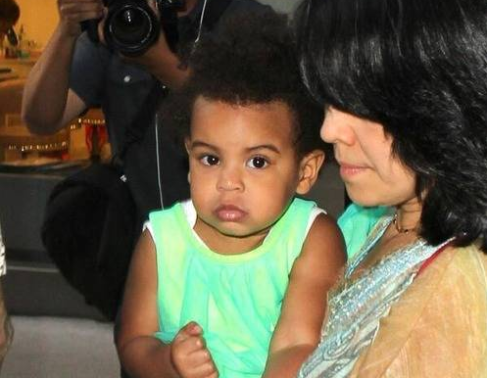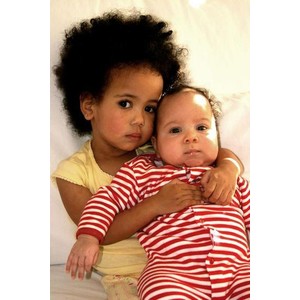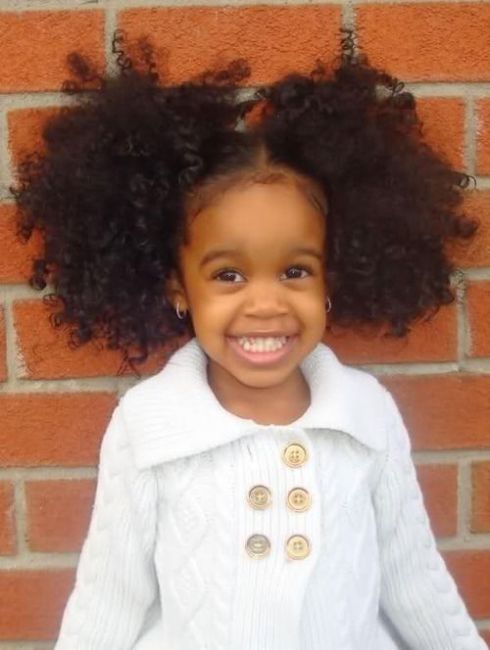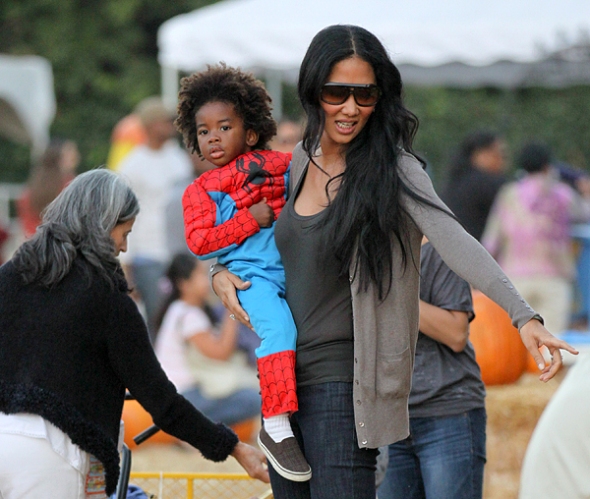Last week there was a lot of debate about baby Blue Ivy’s hair, after a ridiculous petition was created on change.org to ‘comb her hair. It received over 3500 signatures. It also brought natural hair into the forefront again and made me question if the stereotypes about it still exist. The woman who started the petition claims to have natural hair herself and has since said it was a joke. Perhaps people should think twice before ‘joking’ about somebody’s child or ridiculing a baby’s hair. So, what is good practice when it comes to hair care for children at various stages? Here are 6 points that I believe are important for managing our children’s hair. Stayed tuned for more next week.
Less is more when it comes to newborns and babies under 2 years
Not much should be done with their hair at this stage as their scalps are very sensitive; any manipulation is likely to cause damage or pain. The hair fibers will be developing and changing rapidly. In the early months their hair is usually fine, wavy or curly. As they grow, their hair will develop more texture. Most of us have baby pictures of ourselves with softer, loosely curled hair and probably believe it is a contrast to our hair now. It is also common for newborns and young babies to have uneven hair and bald spots . The most likely area for a bald spot is at the back of their head. This is due to them constantly sleeping on their backs and the friction caused by rubbing. To prevent or minimize this, rub a little coconut oil on the affected area to protect it and lay them on a satin blanket.
Shampoos are not considered necessary at this stage either; a simple rinsing with warm water will suffice. As the hair grows in texture and thickness, co-washing can be introduced. A light moisturizer may be used daily to style and nourish the hair. As the hair thickens, a thicker moisturizer can be used, followed by a light oil for sealing.
More moisture is needed for toddler years and older
As a child’s hair texture thickens and matures, the hair fibers will require more moisture, to keep them supple and pliable. A lack of adequate moisture will weaken the hair and lead to breakage. Avoid products that are too harsh for textured hair. With the growth of the natural hair community, there are now a plethora of products catered to natural hair. Many of these products are 100% natural and free from drying ingredients, like Sodium Lauryl Sulfate or silicones. There are a number of kinder shampoo and conditioners that are sulphate-free. Use conditioners that are rich and creamy for adequate slip when washing and detangling.
Low manipulation styling is key
Low manipulation styling should be practiced as the norm. Avoid heat, chemical relaxers and weaves (yes I have seen young children with weaves), as these can hinder healthy growth. Traction alopecia is most prevalent with women and young girls of African descent. This is a cycle that must be broken. Most of our bad habits relating to hair started in childhood. The reasons we are known as the race with the shortest hair is because of generations of chemical use, excessive heat, lack of knowledge about our natural hair and, an over-reliance on tight weaves and braids. It is not because there is anything inherently wrong with our natural hair, or because it doesn’t grow.
Don’t fall for marketing gimmicks.
Be wary of marketing gimmicks such as ‘no tears’ formulas in baby shampoos. These products are marketed as being gentle, but are just as strong and drying as adult shampoos. They still contain high dosages of detergents and surfactants. Being easy on the eyes should not be the only qualifying factor, as they can still be harsh on the hair and have little conditioning values. Afro-textured hair is prone to dryness by its nature. Baby shampoos strip already fragile curly or kinky hair types, leaving the hair shaft unprotected.
Also, be aware that relaxers targeted at children are not gentler than adult relaxers, the ingredients are the same. The only difference is the children on the packaging. The same goes for texturizers, which work the same as relaxers. Both use the same ingredients, either sodium hydroxide or Calcium hydroxide. They permanently alter the natural curl pattern, strip the hair of its elasticity and straighten kinkier hair textures. Texturizers rarely leave the hair wavy or curly like it appears on the box.
Consider using no shampoo and conditioner for the under 5s
A shampoo free regimen is best for those under five years of age. Young children this age typically do not need to use shampoo of any kind on their textured hair, unless it has been heavily soiled (food, playing in the sandbox, swimming etc). No shampoo or conditioner-regimens insure that moisture is reinforced within the strands and is not depleted due to the harsh detergents found in shampoos. This may be a method to consider if your child’s hair continues to suffer from excessive dryness no matter what shampoo you use.
Butters, oils and leave in conditioners
There are many products with petroleum and mineral oil that claim to combat dryness. Instead, these ingredients coat the hair and prevent moisture from being absorbed. This leads to dryness and causes a dependency on the product, causing you to constantly reapply it for temporary relief. Such products have resulted in dry, weighed down tresses for many of our children. Baby oil is 100 percent mineral oil for instance. Instead use natural oils such as coconut oil, grapeseed oil or avocado oil, for sealing and styling. The type of moisturizer used depends on your child’s hair type. Thicker, kinkier hair works well with heavier butters and creams, whereas looser curls and finer hair would need lighter products, so it is not weighed down.
The simple use of water in a spray bottle will suffice, or a water based spray or leave in conditioner can be used. You can purchase detangling sprays, leave-in conditioners, creams, custards or simply make your own water, oil and conditioner concoction. Nourishing butters such as avocado, cocoa, mango and shea can also be used instead of mineral oil or petroleum. The same moisture-sealing rules apply with children. Hair must be moisturized with water, or a water based moisturizer and sealed with an oil or butter. This will help the hair retain moisture, promote shine and improve manageability.
Next week will include: appropriate hair tools, methods of styling and washing your children’s hair.
Please share your hair care tips for children below? What did you think about the Blue Ivy hair petition?
Sources: babycenter.com
Davis-Sivasothy; The Science of Black Hair
The “fringe sign” for public education on traction alopecia:




